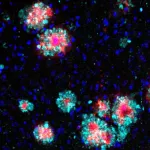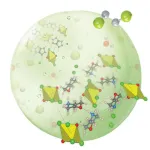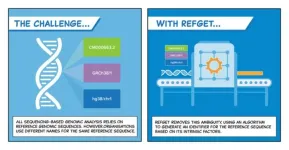(Press-News.org) A new study identifies how certain proteins in the immune system interact leading to organ rejection. The study, which involved experiments on mice and human patients, uncovered an important communication pathway between two molecules called CEACAM1 (CC1) and TIM-3, finding that the pathway plays a crucial role in controlling the body's immune response during liver transplantation.
When an organ is transplanted from a donor to a recipient, the recipient's immune system recognizes the transplanted tissue as foreign, activating an immune response that can lead to rejection. T cells play a significant role in this response.
To prevent or manage transplant injury caused by T cell-mediated rejection, immunosuppressive medications are commonly prescribed. These drugs suppress the immune response and reduce the activity of T cells, helping to prevent rejection and preserve the function of the transplanted organ.
Advancements in surgical techniques, immunosuppressive medications, and post-transplant care have significantly improved liver transplant survival rates, which exceed 90% at one year around 70-75% at year five. Survival can vary depending on factors, including the recipient's immune response.
In a new study, to be published online July 19 in Gastroenterology, scientists led by Dr. Jerzy W. Kupiec-Weglinski, director of the Dumont-UCLA Transplantation Research Center, investigated the role of a specific type of immune cell, called CD4+ T cells, along with proteins called CEACAM1 (CC1) and TIM-3, in how the immune system responds to a transplanted liver. They conducted experiments using mice while also analyzing data from human patients who had undergone liver transplantation.
In the mouse experiments, the scientists transplanted livers from normal mice into mice that lacked the CC1 protein. They found that the livers transplanted into mice without CC1 suffered more liver injury compared to livers transplanted into mice with CC1. They also noticed that there were more special immune cells called TIM-3+CD4+ T cells in mice with CC1.
To understand this better, the scientists introduced T cells lacking CC1 into mice that were missing other immune cells. They observed that this led to more liver damage. However, when they made these T cells produce more TIM-3 and put them into the mice without CC1, the liver damage was reduced.
They also reviewed outcomes of human liver transplants and indeed found that when the levels of CC1 increased during the transplant procedure, the transplanted livers were less damaged, and there were fewer complications and rejections.
"This study gives us an important insight into the essential beneficial role of these factors in liver transplant outcomes," said Dr. Kupiec-Weglinski. "By focusing on how CC1 and TIM-3 work together in T cells, we can potentially protect the liver transplant and improve the overall success of the procedure."
While the findings are an important step, the authors say more research is needed to understand these interactions and how that knowledge can potentially impact the success of liver transplants.
Article: T cell CEACAM1 – TIM-3 crosstalk alleviates liver transplant injury in mice and humans, Gastroenterology 2023 DOI:
END
Study sheds light on cellular interactions that lead to liver transplant survival
2023-07-20
ELSE PRESS RELEASES FROM THIS DATE:
A potential new biomarker for Alzheimer’s
2023-07-20
Alzheimer’s is considered a disease of old age, with most people being diagnosed after 65. But the condition actually begins developing out of sight many years before any symptoms emerge. Tiny proteins, known as amyloid-beta peptides, clump together in the brain to form plaques. These plaques lead to inflammation and eventually cause neuronal cell death.
Interplay of proteins in the brain reveals disease mechanism
Exactly what triggers these pathological changes is still unclear. “We’re lacking good diagnostic markers that would allow us to reliably detect the disease at an early stage or make predictions about its course,” says Professor ...
A non-covalent bonding experience
2023-07-19
UPTON, NY—Putting a suite of new materials synthesis and characterization methods to the test, a team of scientists from the University of Iowa and the U.S. Department of Energy's (DOE) Brookhaven National Laboratory has developed 14 organic-inorganic hybrid materials, seven of which are entirely new. These uranium-based materials, as well as the detailed report of their bonding mechanisms, will help advance clean energy solutions, including safe nuclear energy. The work, currently published online, was recognized as both a Very Important Paper and a Hot Topic: Crystal Engineering in ...
Research analyzes kidney functions and predictors of disease
2023-07-19
Research is shedding light on kidneys, their critical functions, and predictors of disease.
The research co-led by Matthias Kretzler, M.D. describes the creation of a cellular atlas of the kidney describing nearly 100 cell types and states. It represents the most comprehensive study of cellular states, neighborhoods, and outcome-associated signatures in the kidney.
Researchers from more than twenty institutions collaborated on this project.
Kidneys monitor and maintain the internal balance in the body, filter out ...
SARS-CoV-2 infects liver, stimulating glucose production and contributing to severe form of COVID-19
2023-07-19
Research conducted at the University of São Paulo (USP) in Brazil shows that SARS-CoV-2, the virus that causes COVID-19, can infect liver cells (hepatocytes), stimulating glucose production and leading to a condition similar to diabetes (hyperglycemia) in hospitalized patients, even if their blood sugar level was normal before they were admitted to hospital.
An article on the study is published in Proceedings of the National Academy of Sciences (PNAS). The findings describe part of the mechanism used by the virus to infect liver cells and impair glucose metabolism, and point ...
Research could pave way to greener, more sustainable products made with renewable carbon
2023-07-19
Carbon-based materials have several qualities that make them attractive as catalysts for speeding up chemical reactions. They are low-cost, lightweight and their high surface area provides a good scaffold on which to anchor catalysts, keeping them stable and dispersed far apart, while providing molecules a lot of surface area to work. This makes carbons useful for energy storage and sensors. Over the last 10 years, carbons have been used in electrochemistry to catalyze reactions to make chemicals and fuel cells.
However, ...
Unlocking the power of molecular crystals: a possible solution to nuclear waste
2023-07-19
In a world increasingly concerned about the environmental and geopolitical implications of fossil fuel usage, nuclear energy has resurfaced as a subject of great interest. Its ability to generate electricity at scale without greenhouse gas emissions holds promise as a sustainable clean energy source that could bridge society’s transition away from fossil fuels to a net-zero future. However, nuclear power generation does produce radioactive waste. The safe management of nuclear waste remains a crucial challenge that must be addressed to gain public confidence in this transformative power solution.
Now, a team of University of Houston researchers has come up with an innovative ...
refget v2.0 links the hidden dictionaries of DNA
2023-07-19
A widely-used tool that finds the exact references needed to pinpoint differences in our DNA just got a refresh.
On 17 July, the Standards Steering Committee of the Global Alliance for Genomics and Health (GA4GH) voted to release refget v2.0. With better compatibility for a range of reference genome names, formats, and systems, the new version of refget makes it easier than ever to retrieve verified genomic reference sequences.
A vital infrastructure
You may not even realise that you’re using refget already.
“Almost ...
Do certain amino acids modify the risk of dementia linked to air pollution?
2023-07-19
EMBARGOED FOR RELEASE UNTIL 4 P.M. ET, WEDNESDAY, JULY 19, 2023
MINNEAPOLIS – Higher levels of vitamin B-related amino acids may be linked to the risk of dementia associated with a certain type of air pollutants called particulate matter, according to a study published in the July 19, 2023, online issue of Neurology®, the medical journal of the American Academy of Neurology. The study does not prove that pollution or amino acids cause dementia, but it suggests a possible link among them.
Researchers ...
CHOP and Penn researchers find behavioral economics strategies can help patients quit smoking after a cancer diagnosis
2023-07-19
Philadelphia, July 19, 2023 – Researchers from Children’s Hospital of Philadelphia (CHOP) and the Perelman School of Medicine at the University of Pennsylvania found that cancer patients who continued to smoke after their diagnosis were significantly more likely to receive treatment for tobacco use when “nudges” to provide tobacco treatment were directed at clinicians through the electronic health record. The findings strengthen the case for using behavioral economics, or targeting predictable patterns in human decision-making to overcome ...
Hepatitis cases and heart valve infection deaths tied to early OxyContin marketing
2023-07-19
New Haven, Conn. — Decades after Purdue Pharma began to push physicians to prescribe addictive pain pills, the opioid crisis has been a slow-motion disaster, with overdoses destroying lives and families across the country.
Now, it appears the consequences of those early marketing efforts are even more devastating. In a new study, researchers at the Yale School of Public Health show that infectious disease rates in the United States also climbed as a direct long-term result of the marketing of OxyContin.
By ...


